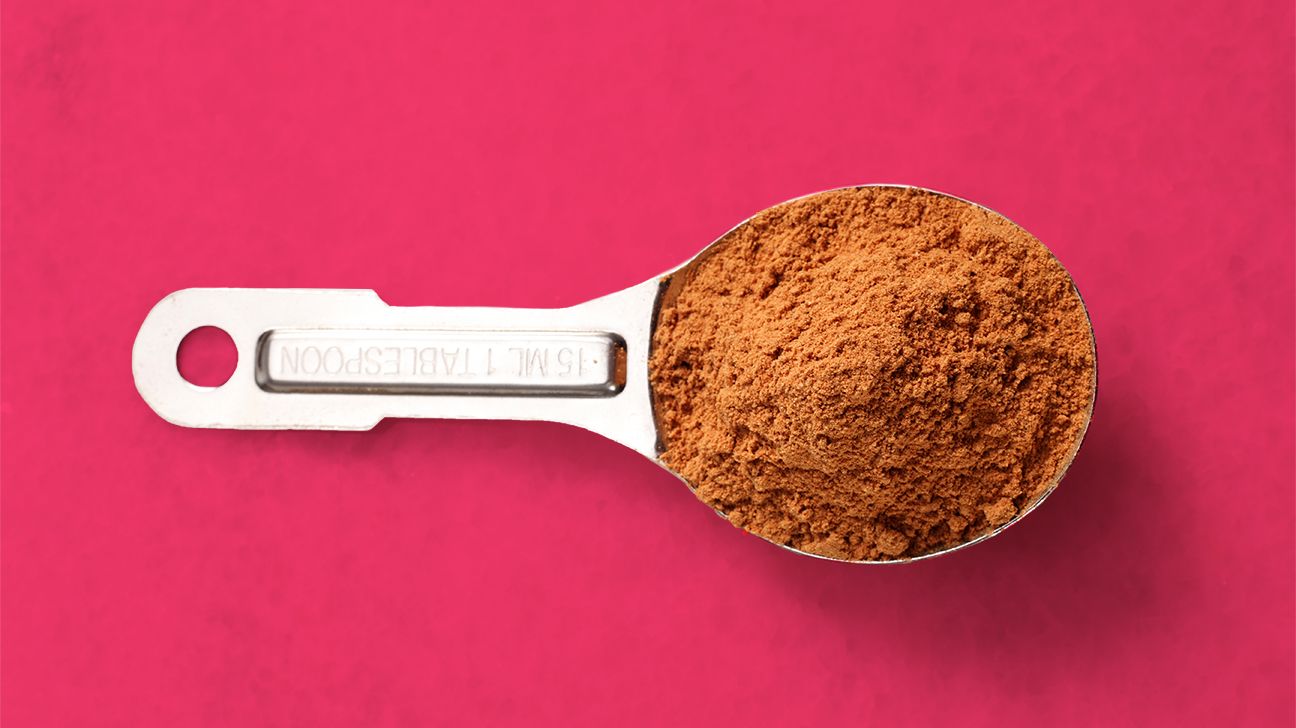Wait, wait, wait — WTF is dry scooping?
Dry scooping is a TikTok trend that involves someone swallowing a scoop of dry, unmixed pre-workout powder, then chasing it with a quick swig of water. (Anyone else getting major cinnamon challenge vibes?)
Despite the health risks of caffeine overload, choking, powder inhalation, and potential lung damage, dry scoopers claim this method is worth the turbocharged energy surge. (But do they know at least one otherwise healthy 20-year-old had a heart attack after dry scooping? Clearly, we’re *scooper* skeptical.)
Keep scrolling for the full (dry) scoop.

There’s no single, science-backed reason why folks are dry scooping. But here are a few possibilities:
- For the likes/thrills/challenge. Like many wellness trends, dry scooping caught fire on social media. Last year, video demos of the practice surpassed 8 million views. Most folks probably dry scoop because they saw it on TikTok — not because they’re in it for so-called health benefits.
- For maximum pre-workout energy. Super scoopers on TikTok say that dry scooping offers a nearly instant energy boost — much faster than, say, mixing the powder with 8 ounces of water and drinking the liquid 30 minutes before a workout (standard protocol for taking pre-workout supplements). Most of the demos we watched featured super-fit peeps dry scooping in the car just before entering the gym.
- For convenience. In at least one TikTok video, the subject said he dry scooped his pre-workout solely for the convenience factor. (But is choking down a scoop of powder *really* faster than chugging 8 ounces of liquid?)
There are three major risks associated with this parched pre-workout practice:
- Consuming too much caffeine, too fast. Overdosing on caffeine is rare, but it’s serious. Most manufacturers pack pre-workouts with caffeine. Dry scooping can flood your body with too much, too fast, which places a ton of stress on your heart. Remember the heart attack we mentioned? A super-charged dry dose of caffeine probably contributed.
- Inhaling pre-workout powder. Sounds pleasant, right? Getting pre-workout powder in your lungs could cause aspiration pneumonia (where germs hitch a ride straight into your lungs due to powder entering your windpipe instead of esophagus). Over time, this can turn into chronic lung disease. This phenomenon, dubbed “baker’s asthma,” happens to some folks after breathing in flour particles for years.
- Choking on a glob of pre-workout. Finally, yeah, you could straight-up choke to death. According to one TikToker, dry pre-workout cements into a big solid clump after a sip of water. Imagine getting that stuck in your craw while sitting alone in your car in the gym parking lot.
Pre-workouts are supplements designed to boost energy before a workout so you can perform your best. The fruit-flavored, super-fine powders are designed to be mixed with water before consumption.
Some common pre-workout ingredients include:
- Caffeine. Meet the star of most pre-workouts. Caffeine delivers energy, focus, and better exercise performance.
- Creatine. Creatine is an amino acid derived compound. It can support muscle recovery. Often taken after a training sesh, it’s included in some pre-workouts, too.
- Nitric oxide boosters. Things like beet extract, citrulline, and arginine may help your body create more nitric oxide, which boosts blood flow.
- Other amino acids. You might find several other amino acids or amino acid derivatives in your pre-workouts. These include taurine, branched-chain amino acids, betaine, or beta-alanine. Amino acids are like the building blocks of muscle and other tissue.
Heads up: Most pre-workouts do *not* contain sugar. Instead, they rely on zero-calorie sweeteners like sucralose or stevia.
Most pre-workouts are designed to be mixed in water and taken prior to a workout. Always follow the directions on your product’s label, but here are some boilerplate instructions:
- Mix 1 scoop of powder with 8 ounces of water.
- Drink the mixture.
- Wait 20 to 30 minutes, then head to your workout!
The mostly-unregulated dietary supplement market can feel like the Wild West. Seek out pre-workout products that are free of contaminants or banned substances. One way to do this? Stick to products that are Informed Sport-certified or NFS for Sport-certified.
If picking a pre-workout sounds overwhelming — or if you’re looking for something more natural — check out these alternatives:
- Coffee or tea. If caffeine’s what you’re after, why not go straight to the source? A cup or two of coffee prior to a workout might have the same effect as a pre-workout, though you’ll want to avoid creamy lattes (commence churning stomach during spin class). Green tea also works, but it has less caffeine.
- A carby snack. A carb-loaded snack can help boost energy before endurance exercises like running or cycling. Good pre-workout snacks include a piece of fruit, a nut butter sandwich, a sweet potato, a fruit-and-oat smoothie, or yogurt with granola.
- Salt. A bit of salt before and during exercise might boost performance. Emerging research shows that saltwater rinses are as effective as glucose (sugar water) when it comes to maintaining exercise performance. As long as you’re not on a low salt diet, sprinkling a little bit in your water might provide a natural workout boost.
Dry scooping is TikTok-speak for knocking back a full scoop of dry pre-workout powder with just a sip of water.
Yes, dry scooping might help the pre-workout take effect more quickly, but it comes with major risks: caffeine overdose, choking, and lung damage.
If you’re gonna take a pre-workout supplement, choose one certified by Informed Sport or NFS for Sport. Also follow the product’s dosing instructions. Or just skip the supplements and enjoy a cup or two of coffee before hitting the gym.

